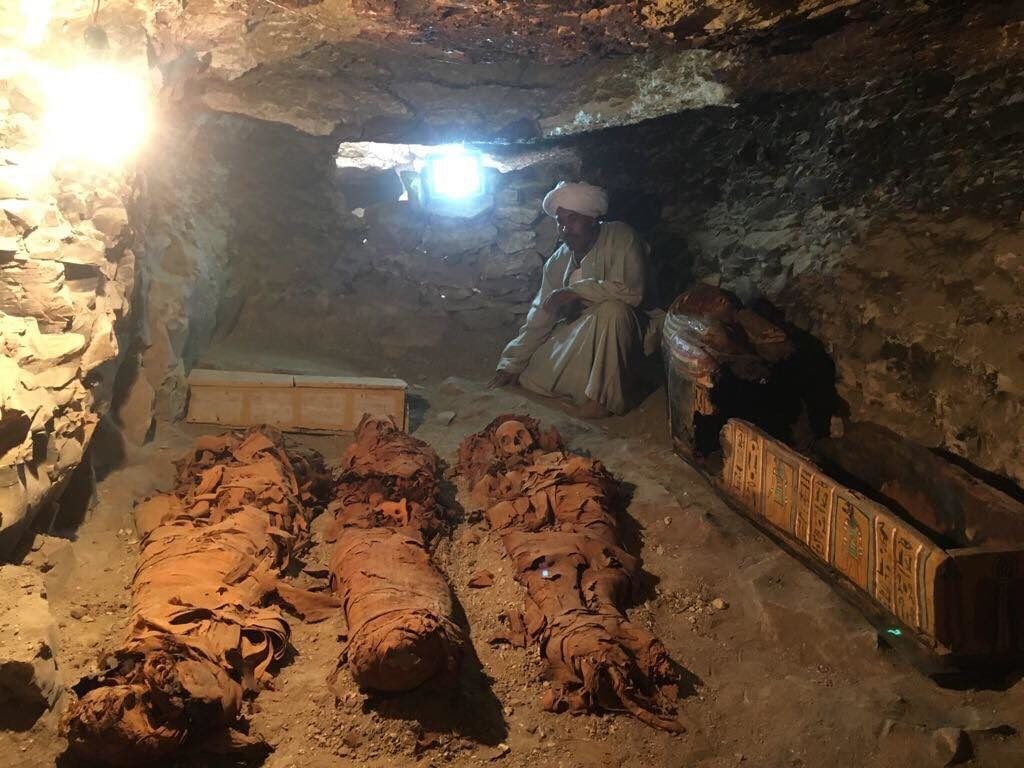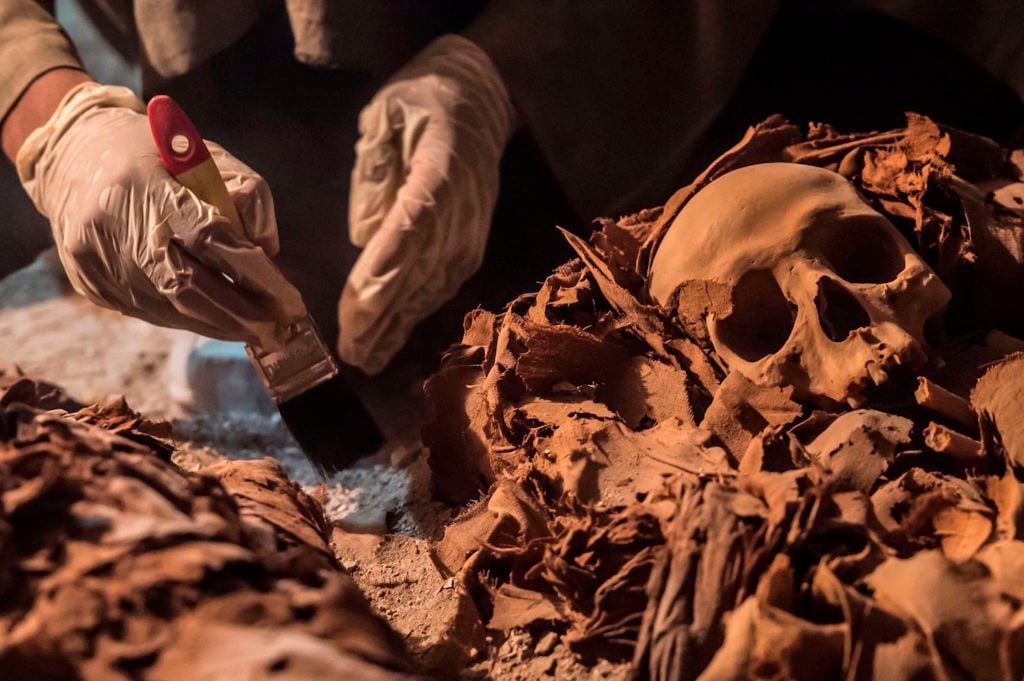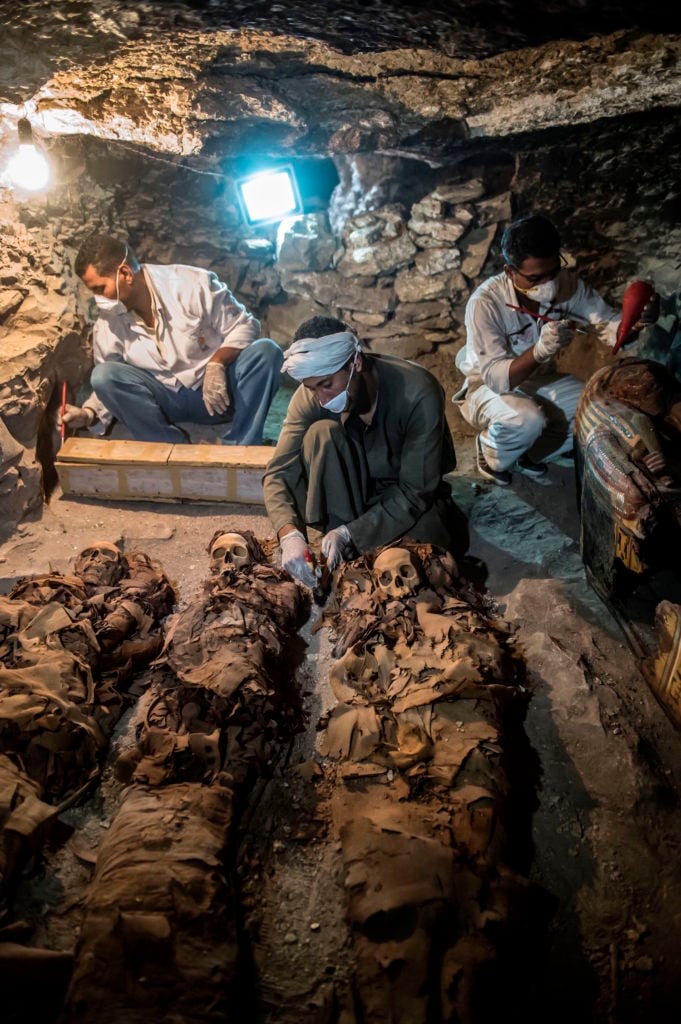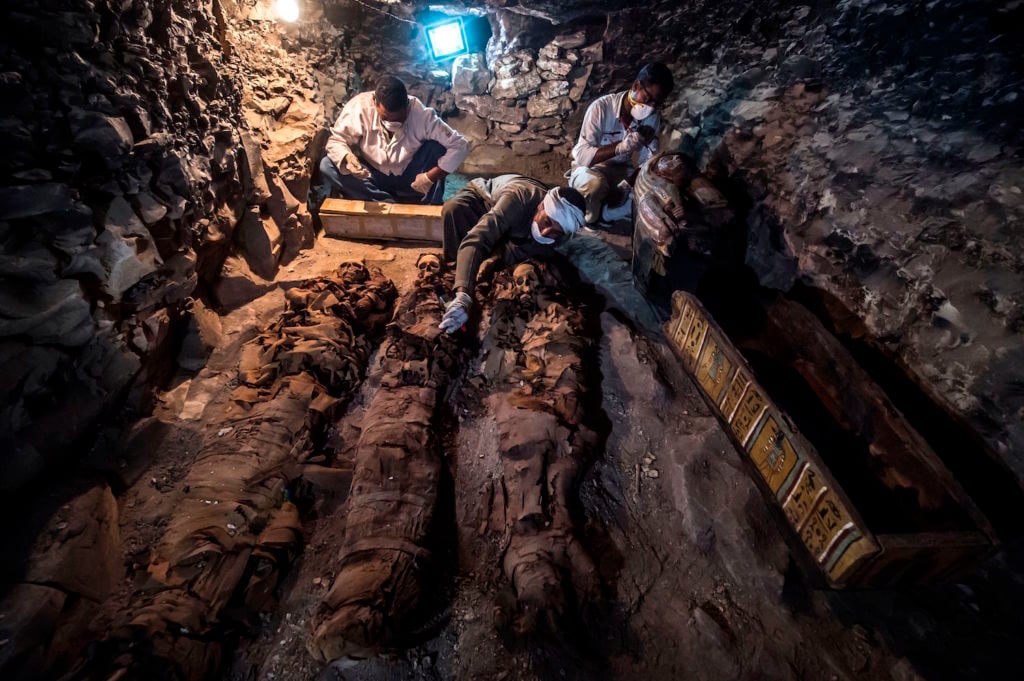Art World
The Tomb of a Pharaoh’s Jeweler Has Revealed Some Very Fancy 3,500-Year-Old Mummies
Another nearby discovery earlier this year provided a clue to the Luxor tomb's whereabouts.

Another nearby discovery earlier this year provided a clue to the Luxor tomb's whereabouts.

Sarah Cascone

The drumbeat of Egyptian archaeological discoveries continues, with that country’s Ministry of Antiquities revealing that it has uncovered an ancient tomb belonging to an Egyptian goldsmith named Amenemhat. The site is just the latest archaeological find in the Draa Abul Naga necropolis, located near the Valley of Kings in the city of Luxor, some 400 miles south of Cairo on the Nile River.
“We found many objects of the funerary equipment inside and outside the tomb,” said Minister of Antiquities Khaled al-Anani in a statement, as reported by the BBC. “We found mummies, coffins, funerary combs, funerary masks, some jewellery, and statue.”
Lead archaeologist Mostafa Waziri stressed that an Egyptian team, rather than foreign professionals, was responsible for the find.
“We used to escort foreign archaeologists as observers, but that’s now in the past,” Waziri told the Daily Mail. “We are the leaders now.”

Egyptian archaeologists unearthing mummies at a newly-uncovered ancient tomb in Luxor. Courtesy of Khaled Desouki/AFP/Getty Images.
About 3,500 years old, the tomb is thought to date to the 18th dynasty. Amenemhat was a jeweler, and his tomb was dedicated to Amon-Re, the main Egyptian deity. Inside, archaeologists found a statue of Amenemhat and his wife, featuring a portrait of their son between them. The site also contained 150 small carved wood, clay, and limestone funerary statues.
Archaeologists found two separate burial shafts, both of which contained mummies. Later sarcophagi, from the 22nd and 21st dynasties, were also excavated.

Egyptian archaeologists unearthing mummies at a newly uncovered ancient tomb in Luxor. Courtesy of Khaled Desouki/AFP/Getty Images.
“We are not sure if these mummies belong to Amenemhat and his family,” Waziri told the New York Times.
Waziri also pointed out that he and his team are not the first to have found the ancient crypt, which, he revealed, was likely disturbed long ago. “Others have clearly reused this tomb and poked around in ancient times,” he said. “That’s probably why their heads are uncovered.”
The latest find follows other recent discoveries in the region. Last November, archaeologists discovered a lost city thought to be Egypt’s first capital. In April, a Japanese team unearthed a 3,500-year-old tomb belonging to an ancient Egyptian nobleman named Userhat. It was work on the latter site that first offered clues about the whereabouts of Amenemhat’s tomb, according to CNN.

Egyptian archaeologists unearthing mummies at a newly-uncovered ancient tomb in Luxor. Courtesy of Khaled Desouki/AFP/Getty Images.
The country hopes excitement over archaeological sites can help boost tourism levels, which have remained low in the years following the 2011 ousting of former president Hosni Mubarak. Egypt has since struggled with political instability, as well as car bombings and other terrorist attacks.
The spate of recent discoveries has led to a 170 percent increase in tourism between January and July, according to the Times.
“This is not the end,” said Waziri of the latest find. “This will lead to more discoveries in the future.”